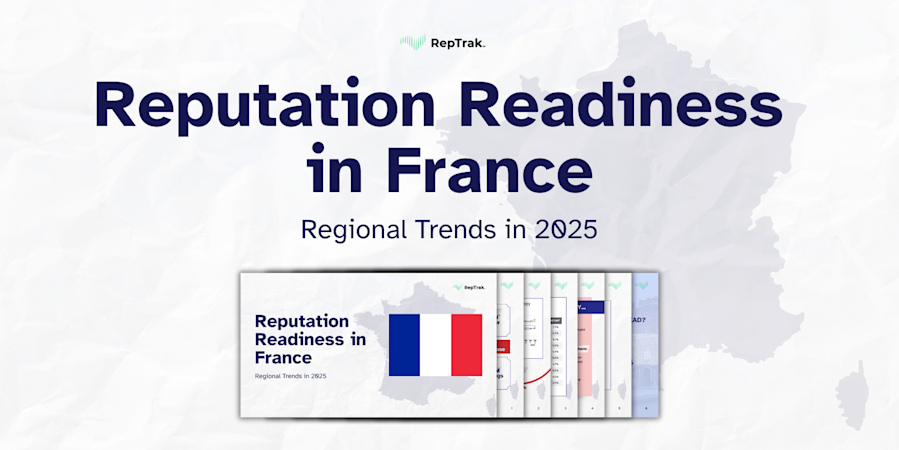Capturing Stakeholder Attention Through ESG Communication
Blog Post29 Jan, 2021
How important is communicating your company’s environmental, social, and corporate governance initiatives? It’s critical: Investors are increasingly prioritizing ESG in their financial decisions, representing a fundamental shift in the way companies are evaluated. If you don’t own the narrative on your ESG efforts, you have to catch up.
Many CEOs and investor relations departments are just starting to realize why ESG is important. ESG initiatives were initially pushed from the inside out (e.g., internal teams convincing executives). Corporate responsibility departments urged C-suite members to make ESG a priority, but executives believed ESG initiatives were more about public relations than business impact.
Now, investors are driving ESG activity from the outside in. Over the past two years, stakeholders figured out that it does have a business impact. So, they’re asking company executives, “What is your ESG strategy? Do you have a story?” Companies feel pressured to catch up because investors are getting their information on ESG initiatives from third-party sources — which are often inaccurate and infrequently updated.
Why ESG Is Important in Business
Stakeholders will be closely following your ESG initiatives and business communication because ESG has become a primary driver of purchase behavior. A low ESG score results in a 20% willingness to buy, whereas a high ESG score results in a 60% willingness. Also, ESG is three times more important to Millennials when making purchases.
Investors recognize that the most significant risks are ESG-oriented rather than operational, so they’re evaluating your company based on its ESG efforts. Poor or hastily released products might be major operational risks, but it’s far more detrimental in the long term to be caught manipulating carbon emissions tests like Volkswagen. Plus, COVID-19 revealed that employee health and safety (an ESG risk) was one of the public’s main concerns in 2020.
According to McKinsey & Company, ESG initiatives show stakeholders and the public that your company is trustworthy. Our research supports this claim: ESG scores have the tightest statistical correlation with trust. If you’re implementing and communicating about ESG efforts, people will give you the benefit of the doubt — even during crises. For example, Wells Fargo pledged to double the number of its Black leaders in 2020, which helped the public establish trust in the institution after George Floyd’s death. Unfortunately, there’s usually misalignment between companies’ ESG initiatives (reality) and what the public thinks they’re doing (perception).
Our ESG sentiment analysis revealed there’s a gap between perception and reality in business. Less than 10% of companies report alignment between public perception and reality. You might be working toward environmental, social, and corporate governance goals, but people don’t know about them. If you can successfully improve your ESG communication, you can shorten (or close!) the gap altogether — and boost stakeholders’ evaluations of your company.
How to Capture the Attention of Stakeholders With Your ESG Efforts
The formula for success is action plus communication. Start by figuring out what your stakeholders specifically care about. Baby Boomer women might feel differently about governance, leadership, etc., than Generation Z men. You need to talk about the right topic to the right segment to improve public perception and capture stakeholder attention. Here are three ways to improve your internal and external business communication when it comes to ESG:
1. Appoint your CEO as the spokesperson.
Public relations plays a significant role in ESG communication. That’s why your CEO should act as the spokesperson when addressing your audiences. COVID-19 and other national events have drastically changed the way investors and companies interact; people expect speakers to be media trained and intimately know their companies. Having your CEO talk about your ESG initiatives will meet the public’s expectations and keep your communications on-message.
2. Own the ESG narrative.
Think of your company’s ESG efforts as part of its story. Now is the time to proactively tell audiences about your projects and goals as well as why your company believes in them. The important thing is to be transparent and purposeful in your business communication. If your company is making progress, that’s great! If not, you should also be upfront about your company’s struggles and any solutions you’re exploring.
3. Give equal attention to internal ESG communication.
ESG is becoming a companywide focus. This means you need to internally communicate why your company’s ESG initiatives aren’t just one team’s responsibility. Ensure everyone is on the same page by emphasizing the importance of the public’s trust and explaining how the company will invest in steps to improve. Internal corporate communication drives the ESG agenda.
If you’re trying to change your company’s public perception, you have to talk about your ESG efforts. Too many companies are making great progress toward their goals without ever informing anyone about it. Avoid creating this same gap by capturing the attention of stakeholders with your ESG communication.
Want to learn how the public perceives your ESG efforts? Click here to see our solution.






